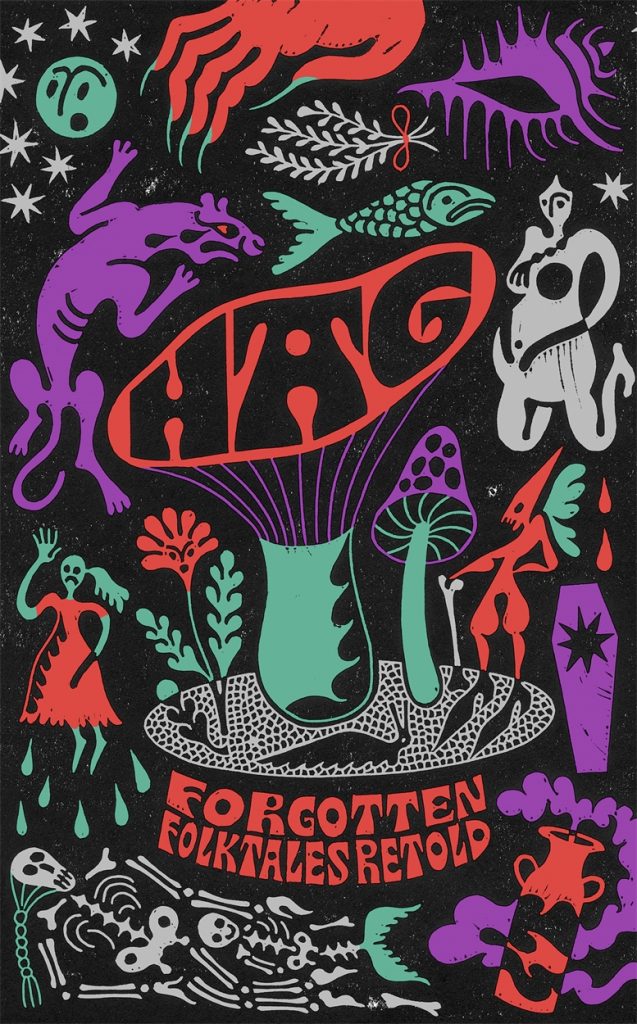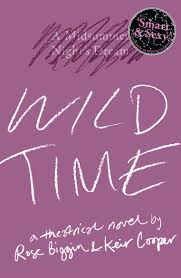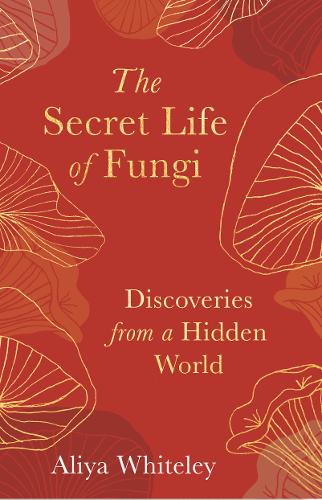As an opportunity for partying and dressing up as the Witchfinder General (I really do need that cloak) it looks like Hallowe’en is pretty much cancelled this year. All the more reason then to bake some skeleton cookies and curl up on the sofa with a favourite horror movie or a volume of ghost stories (or indeed both).

Luckily for all of us, there is some wonderful new gothic reading to be had, and as a Hallowe’en treat this year I am delighted to recommend a brand new anthology I’ve just finished reading. It’s called HAG (because of course it had to be) and is subtitled ‘forgotten folk tales retold’. As a concept it is wonderful: ten contemporary women writers offer their own take on some of the more obscure regional folk tales of the British isles. We’re all familiar with retellings of popular fairy tales such as Cinderella, Beauty and the Beast or The Little Mermaid, and there are some superbly innovative interpretations out there. But the stories in HAG are different: obscure and often remembered only in the particular part of Britain from which they originate, they offer microcosms of rural life from the time when they were first being told. The Britain that emerges from these tales is a place of dark magic, eerie transformations, fairy mischief and supernatural retribution. As with so much British weird, landscape often plays a central role in these stories, grounding the magic firmly in a reality that is stark and dangerous to navigate.
The original folk tales that inspired HAG are reprinted in full, together with an introduction from Carolyne Larrington that sets the stories in context, examining the influence of fairy tales on our national literature, then and now. It is this kind of attention to detail that helps to make HAG such a magical book and a genuinely informative one, a project that clearly means a great deal to everyone involved with it. And yet to experience the power of this anthology in its purest form, I would recommend that readers leave the original tales and the excellent introduction to one side until they have finished reading the stories themselves. Each of the ten new stories offers a brilliantly original modern interpretation of an old, old tale, its own world of magic and beauty and occasionally terror. Each one is radically different in style and form, and although it’s a cliche to say it, there really is something here for everyone.
The standout story for me is Daisy Johnson’s ‘A Retelling’, based on the old Suffolk tale ‘The Green Children of Woolpit’. I loved the blend of autofiction and fairy tale, the one segueing seamlessly into the other to create an unsettling yet ultimately transcendent effect. (Reading this story reminds me I really do need to grab myself a copy of Johnson’s new novel Sisters.) Stories by Naomi Booth, Natasha Carthew and Imogen Hermes Gowar (so painful to read but bravo that ending!) offer their own delights, and I deeply appreciated Eimear McBride’s tongue-in-cheek subversion of the entire brief. The wonderful thing about HAG though is that every reader will find their own favourite story. Needless to say, this book, which has one of the most beautiful covers I’ve come across this year, would make the perfect Hallowe’en gift.
Hallowe’en is a time of transformations, and in this light I would also like to recommend Wild Time, a short novel by the writer, artist and performer Rose Biggin in collaboration with her partner Keir Cooper. I know Rose – we have appeared in several anthologies together – and I was intrigued to see what she would do with a longer-form narrative. Rose is boldly experimental in her theatre work, and I am delighted to say her latest project is every bit as daring, not to mention fabulously entertaining.
Wild Time takes as its template what is possibly Shakespeare’s most popular and well known play, A Midsummer Night’s Dream. One of the most remarkable aspects of this book is the way it honours its source material: the bawdiness, the humour, the word play, the theatrical chaos – they’re all here, all mined knowingly and inventively and to delightful effect. As in HAG, the reinterpretation of the characters and situations to fit a modern idiom is expertly handled (Titania, Queen of the Fairies, sweeping along the platform at Bank station was a particular highlight for me and a moment I will no doubt remember with affection when I eventually get the chance to visit London again). The authors’ willingness to be bold and innovative in terms of language and form adds extra verve, and their understanding of and appreciation for theatre in every sense of the word results in a work that almost demands to be adapted for the stage. Take note, Wild Time contains some pretty explicit action, shall we say, though the poetry, humour and sheer joy with which these erotic elements are handled is refreshing and beautiful (and may indeed leave some readers opting for an early night :-)) Wild Time is a lovely book, and one that will raise a sorely needed smile as these dark days encroach.

For those daring a walk in the woods this Hallowe’en, let me heartily recommend as a companion to their trip Aliya Whiteley’s The Secret Life of Fungi, an exploration of the kingdom of mushrooms and Whiteley’s first non fiction book.
Readers familiar with Whiteley’s novella The Beauty (and if not, why not?) will already have more than an inkling of her interest in mycology. The Secret Life of Fungi takes us deeper into her world, unearthing facts and folklore around fungi that will offer something new to even the most seasoned enthusiast. Beautifully written, this book is an intensely personal narrative, tracing Whiteley’s interest in fungi from childhood walks with her father through to her continuing fascination with these mysterious life forms in the present day.
As you might expect from Whiteley, there is some lovely nature writing here, evocations of landscape that will stir a personal response in every reader. Above all, one gains a sense of going on a journey – of accompanying Whiteley both on her walks and in her contemplation. This is a book that throws up more questions than answers and I love it all the more for that. For those who cherish books as physical objects, The Secret Life of Fungi is exquisitely made and conceived and like HAG, would make a beautiful Hallowe’en or even Christmas gift.

As the Scottish winter closes in on us yet again, we take comfort in the fact that we wouldn’t be visiting the mainland much at the moment in any case. Very much on the up side, there’s plenty of reading and writing going on, and I’m hoping to begin a new winter blogging project before the end of November. In the meantime, I hope you’re all doing well and staying safe, and here’s to Hallowe’en, a time of change, transformation, and gratitude for the landscape, artistic creations and people that fuel our imagination. For ourselves, we’ll be settling down tomorrow evening with the 1989 Nigel Kneale adaptation of The Woman in Black. Fondly remembered, unseen for thirty years – let’s hope it holds up!